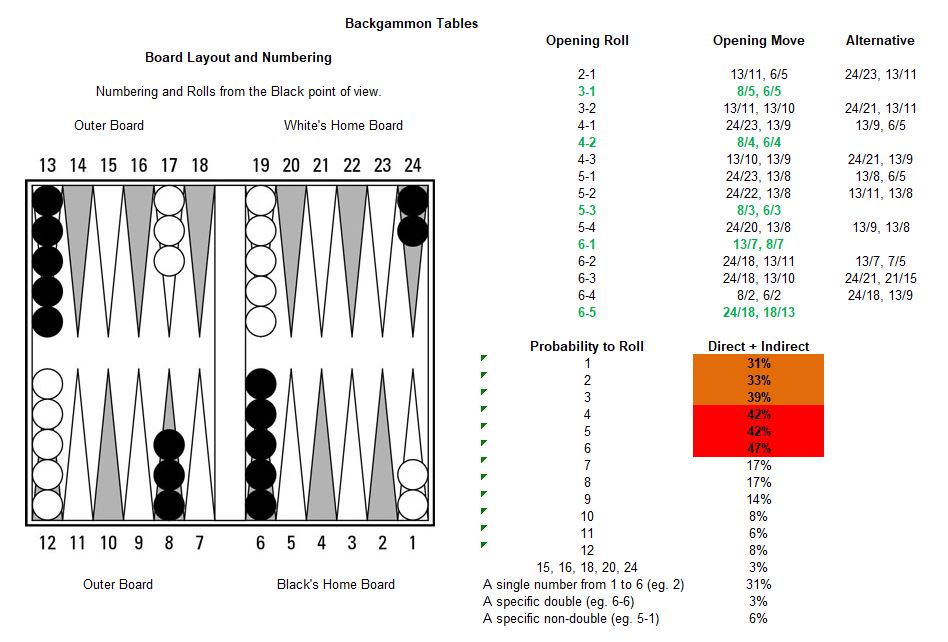Last updated on May 16, 2024
Backgammon is a game of mathematical decisions that can be immensely complex. During the course of a game, there is rarely time to make these decisions precisely. In fact, it may well be near impossible to make these calculations with computer-like precision. Experienced players will have built up a series of reference points over many years of play. It is these reference points that can be used to formulate rules of thumb that can be applied during standard play.
Of course, these rules do not apply in every situation, and if applied at the wrong time they could lead you to a poor decision. However, overall these rules will help to simplify your decision-making process.
Rules of thumb.
- Remember, at its core, backgammon is a race. Keep track of the pip count at all times and alter your strategy according to how far in front or behind you are in the race. The rule of 8 can help with this decision.
- It is better to take risks early on in the game because there is usually time to recover.
Hitting
- Always consider, in order of priority. Can you hit? Are you able to secure a point? Can you move a checker to safety?
- Try not to put your checkers out of play. For example, putting a stack of checkers on your ace point is a waste of material that could be put to better use elsewhere on the board.
- If you have to leave blots, try to leave them out of range of a direct hit (6 or less) from a single die.
- Can you hit and secure a point or move the checker to safety?
- Are you able to hit two checkers? If you can, do so.
Priming
- Can you build or extend a prime? A 6-prime creates an impassable barrier for your opponent’s checkers. Even a 5 or a 4 prime is a formidable obstacle.
- Early in the game, it is almost always a good move to secure your 5-point or your opponent’s.
- Make flexible moves to maximise your options on your next roll. Try not to stack a lot of checkers on a single point, a maximum of four is a good guideline.
Strategy
- If you are well ahead in the race, be more inclined to play safe and to run. If you are behind in the race, always look for blocking and hitting opportunities.
- Alter your style of play according to the state of the game.
- Any time you are not sure which move to make, consider the game from your opponent’s position and make the move your opponent would hope you wouldn’t make.
- Back games are to be avoided. However, forcing your opponent into a back-game strategy is always a good idea.
Doubling
- Are you are worried about being doubled, if so, choose the play which is least likely to get you offered the cube.
- Pause and think about whether or not you should be doubling before every roll.
- When you are considering doubling, always ask yourself if you are too good to double. Because if your opponent is certain to pass it may be better to hold and to work towards a gammon.
Probability
- · Backgammon is a game of probability, know your numbers. See the table below.
The table above assumes that the board is open for every possible throw. If part of the throw is blocked by an intervening point being held by opposing checkers, the chance of being hit is less.
Related content
Backgammon rules are available on this link.
Simple set of backgammon rules, including a single page PDF.



Of course these rules do not apply in every situation, and if applied at the wrong time they could lead you to the wrong play or cube decision, but overall, I guarantee you that knowledge of these rules will greatly help and simplify your decision-making process.